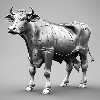Could you elaborate on the concept of an inverse exchange-traded fund (ETF)? In simple terms, how does it work? I'm curious to know if these funds seek to profit from a declining market or a specific asset's decline in value. Do they operate by investing in short-selling strategies or derivatives? Are they suitable for investors with a certain risk tolerance? Additionally, how do they compare to traditional ETFs in terms of performance and risk? Your insights would be greatly appreciated.

5 answers
 Ilaria
Mon Jul 22 2024
Ilaria
Mon Jul 22 2024
An inverse exchange-traded fund, commonly referred to as an inverse ETF, is a unique financial instrument listed on a public stock exchange.
 Elena
Sun Jul 21 2024
Elena
Sun Jul 21 2024
BTCC, a UK-based cryptocurrency exchange, offers a wide range of services including spot trading, futures contracts, and digital wallet solutions. These services cater to the needs of both retail and institutional investors in the cryptocurrency market.
 Dario
Sun Jul 21 2024
Dario
Sun Jul 21 2024
The primary objective of an inverse ETF is to provide investors with a return that is inversely correlated to a specific index or benchmark.
 HanbokGlamourQueen
Sun Jul 21 2024
HanbokGlamourQueen
Sun Jul 21 2024
In essence, as the tracked index or benchmark rises, the inverse ETF's value falls, and vice versa.
 Claudio
Sun Jul 21 2024
Claudio
Sun Jul 21 2024
This strategy allows investors to hedge against potential losses in their portfolios or to speculate on market movements.

